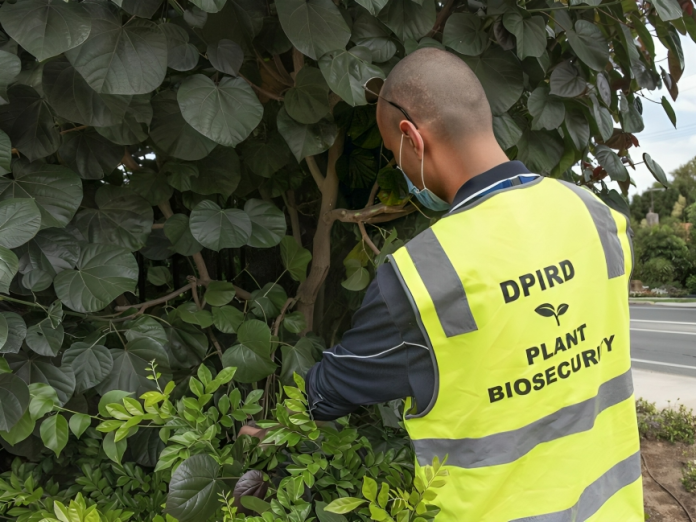A quarantine area around the whole of Perth has been extended to stop the spread of a tree-killing beetle.
Effective from Friday, the WA Department of Primary Industries has broadened a quarantine area, restricting the movement of plants.
Authorities are trying to get a handle on the destructive polyphagous shot-hole borer, which burrows into tree making tiny holes.
The beetles have a symbiotic relationship with fungus; the fungus kills trees and the beetles also cause structural damage.
“Across the Perth metropolitan area, [department] officers have inspected more than 1.9 million trees on over 62,000 properties since the response started in 2021,” chief plant biosecurity officer Vincent Lanoiselet said.
Despite the three-year fight against the beetle, five new council areas have now been added to the quarantine blanket, which now encompasses 30 councils; Armadale, Kwinana, Munda ring, Rockingham and Serpentine Jarrahdale have now been included.

There is a “zone A” encompassing the central suburban area up to Balga in the north, Ellenbrook in the northeast, Gosnells in the southeast and Wattleup in the south.
This area has a high number of infested trees.
People in that zone cannot move untreated or unseasoned wood outside the zone unless it is chipped to pieces smaller than 2.5 cm. Residents cannot move plant materials, including living plants, that are greater than 2cm in diameter outside the zone and any machinery used to handle green waste must be cleaned before it can be moved from the zone.

The Department of Primary Industries has created a “zone B” as a buffer, which encircles most of the greater Perth suburban area, though stops north of Mandurah. The same rules apply as the inner quarantine zone, but wood and plants can go from zone B to zone A.
“Expanding the quarantine area will provide an additional buffer zone where we are increasing surveillance for the borer and taking immediate action to manage the pest in this area,” Dr Lanoiselet said.
The borer does not grow in lawn and grass clippings.
“As the weather warms, we urge everyone to check their trees for signs of the borer, particularly those host trees at highest risk such as box elder maples, coral trees, Moreton Bay and Port Jackson figs and London plane trees,” he said.
“Signs of borer activity include tiny holes the size of a ballpoint pen in the tree trunk or branches, staining or discolouration of the wood, gumming and frass, as well as signs of dieback in the tree.”

Source: www.News.com.au


